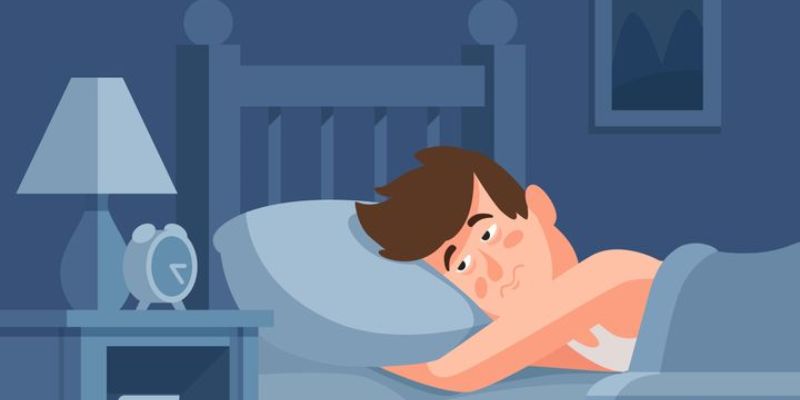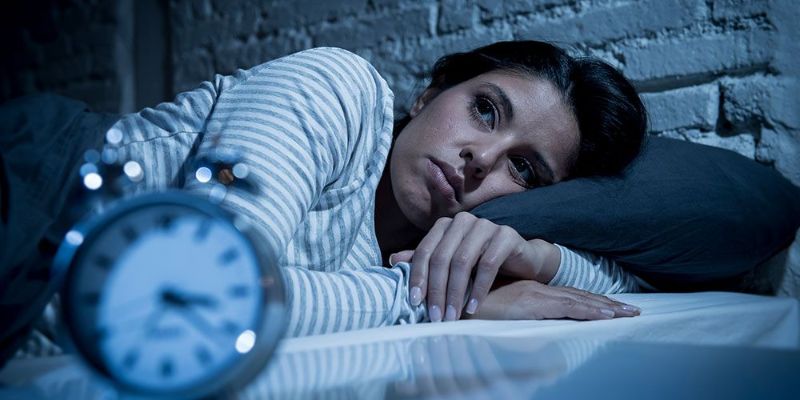The 4 Stages of Sleep
Feb 20, 2024 By Madison Evans
Sleep is a near-universal experience, yet our collective understanding remains incomplete. Human sleep is an incredibly complex biological process that can be broken down into four stages – Awake time, light sleep, deep sleep, and rapid eye movement (REM) sleep.
Each stage presents unique challenges and opportunities for further exploration; by understanding these different stages, we can build more effective solutions to get the best night's rest possible.
This post will explore what happens during these four stages of the human sleep cycle and how to ensure you get adequate quality rest every night!
NREM Stage 1-Awake Time

Non-rapid eye movement (NREM) stage 1 transitions between waking and sleeping. During this time, the brainwaves slow down significantly from the alpha waves of wakefulness to theta waves, about one-third slower than alpha. This stage typically lasts about 5 to 10 minutes before progressing into deeper stages of sleep.
Though people may not be consciously aware of it during NREM stage 1, they often experience brief awakenings throughout their sleep cycle due to physical sensations such as noise or temperature changes in the environment. These microarousals can disrupt sleep quality and lead to daytime fatigue if they occur frequently.
The Oura app uses several metrics to determine how much time was spent awake during NREM Stage 1, including total sleep time, movement during the night (as indicated by graphically taller white lines), and Awake Time.
By tracking these metrics over time, users can understand their overall sleep quality and determine if they have too many microarousals throughout the night.
NREM Stage 2-Light Sleep
Light sleep, or non-rapid eye movement (NREM) stage 2, is crucial to sleep. It accounts for around half of people's sleep, with each cycle usually lasting 20 minutes.
During this sleep phase, your body temperature drops, and your awareness of external stimuli decreases. Your eye movements cease, and your breathing and heart rate become more regular as brain activity increases in the form of rapid bursts called sleep spindles that are thought to be involved in memory consolidation.
Other benefits attributed to light sleep include improved creativity and enhanced ability to recall information. This is partly because NREM stage 2 prepares the body for deep stages 3 and 4 (NREM) and rapid eye movement (REM), which are responsible for repairing, restoring, and resetting your body.
Light sleep doesn't necessarily mean drowsiness; it involves a gradual transition from wakefulness to deep sleep. To maximize the benefits of light sleep, people must ensure comfortable conditions with minimal noise and adequate darkness in their sleeping environment.
Maintaining a consistent bedtime routine is important as this prepares the body for sleep by helping you relax. Regular exercise and avoiding caffeine or other stimulants late at night can also help improve light sleep quality.
NREM stage 2-light sleep plays an important role in cognitive functioning and overall physical health and should be taken seriously to ensure that our minds and bodies perform at their best.
By creating a conducive sleep environment, avoiding stimulants late at night, exercising regularly, and having a consistent bedtime routine, people can maximize the benefits of light sleep and get the restful nights they need.
NREM Stage 3-Deep Sleep
The third stage of non-rapid eye movement (NREM) sleep, also known as deep or slow-wave sleep, is a critical component of good quality sleep. This stage contributes to physical and mental health, cognitive functioning, and overall well-being.
During NREM Stage 3, the brain produces slow delta waves, slowing heart rate and breathing. During this phase, the body relaxes while muscles completely relax and blood pressure drops.
Deep sleep is important in consolidating declarative memories such as general knowledge, facts or statistics, personal experiences, and other things we've learned. During this phase, our bodies start repairing themselves – both physically and mentally.
Not getting enough NREM Stage 3 sleep can leave us tired and groggy the next day, making it difficult to concentrate or be productive throughout the day.
Sleepwalking is also more common during this stage of deep sleep, as well as night terrors – where a person wakes up abruptly with a sudden fear in response to a dream they were having. Children and young adults are more likely than older adults to experience these kinds of events during deep sleep.
By understanding how our bodies move through different stages of sleep, we can work on improving our overall quality of rest and build better solutions for getting the best night's rest possible.
Ensuring you're getting adequate deep sleep will help keep you refreshed and recharged during the day, enabling you to make the most out of your waking hours.
REM Sleep
Rapid Eye Movement (REM) sleep is a vital stage of sleep that occurs roughly 90 minutes after falling asleep. During REM, brain activity closely resembles what happens during waking hours, and dreams may occur. Memory consolidation also takes place, and emotional memories are processed and stored.
Brain wave activity increases, breathing becomes faster and irregular, and eyes move rapidly behind closed eyelids. It's also common to experience jerky muscle cramps as you dream in this stage of sleep. The body can lose some muscle tone to protect from acting out dreams.
Research has shown that REM plays an important role in emotional health, learning, memory consolidation, making new connections between various topics, revising mind-wide associations, and regulating potentially negative emotional reactions.
Without REM sleep, these important functions would not be able to take place. Additionally, studies have shown that about 80% of vivid dream recall results after arousal from this stage of sleep.
Factors That Affect Your Sleep Cycle

During your sleep cycle, a range of factors can impact the quality and duration of your slumber. These include:
• Older age - As we age, the amount of time spent in each stage of sleep reduces. This may contribute to an overall reduction in the quality of sleep.
• Sleep disorders - Disorders such as insomnia and sleep apnea can disrupt the normal stages of sleep, leading to disturbed or fragmented rest.
• Nocturia – Excessive night-time urination is experienced by many people and can prevent them from getting a full night's rest.
• Pain – Chronic conditions like arthritis often cause pain that disturbs a person's ability to get a good night's sleep.
• Mood disorders – Depression, anxiety, and other mental health conditions can make it difficult to fall or stay asleep for a prolonged period.
• Other health conditions – Diseases like diabetes, heart disease, asthma, and obesity can interfere with the normal stages of sleep.
• Lifestyle habits - Habits such as smoking, alcohol consumption, and exercise can affect the sleep quality you experience each night.
By understanding these factors that affect your sleep cycle, you can better understand how to improve your overall sleeping pattern. This knowledge may help you to get the best night's rest possible!
FAQs
What happens during light sleep?
Light sleep is the first stage of non-rapid eye movement (NREM). During this phase, heart rate and breathing slow down but are still relatively shallow compared to the deeply restorative NREM stages 3 and 4. During this time, physical and mental relaxation can help prepare you for more restorative stages of sleep.
Can lifestyle habits influence my sleeping pattern?
Yes - lifestyle habits such as smoking, alcohol consumption, and exercise can all affect the sleep quality you experience each night. Avoiding stimulants late at night, exercising regularly, and maintaining a consistent bedtime routine can help to optimize your sleep cycle.
How does REM sleep benefit cognitive functioning?
During this phase, memory consolidation occurs, and emotional memories are processed and stored. Research has also shown that about 80% of vivid dream recall results after arousal from REM sleep.
Conclusion
Sleep is an important part of our overall health and well-being. By understanding the different stages of sleep, i.e., Awake sleep, light sleep, deep sleep, and REM, we can work to ensure enough rest each night. Knowing how lifestyle habits and other factors affect your sleeping pattern may help you to get the best night's rest possible. With a better understanding of your sleep cycle, you can improve your quality of rest and make the most out of your waking hours.
-
 Nov 16, 2023
Nov 16, 2023Best Toenail Fungus Treatments
Have toenail fungus? You're not alone! Find out about the best treatments today and how they can quickly help rid yourself of this embarrassing infection.
-
 Feb 25, 2024
Feb 25, 2024Signs of Fibroids Breaking Down
Learn about the common signs and symptoms associated with fibroids breaking down, including pain, nausea, a bloated feeling, and more. If left untreated, they can have serious implications for overall health. Get informed today!
-
 Feb 25, 2024
Feb 25, 2024Benefits of Vitamin D3
Find out why Vitamin D3 is so important to our health and the incredible benefits it can provide. Learn how to get more of this essential nutrient in your diet.
-
 Dec 07, 2023
Dec 07, 2023Best Insoles for Plantar Fasciitis
Looking for relief from plantar fasciitis? We've researched the best insoles on the market so you can move around more easily. Get expert tips and advice here!
